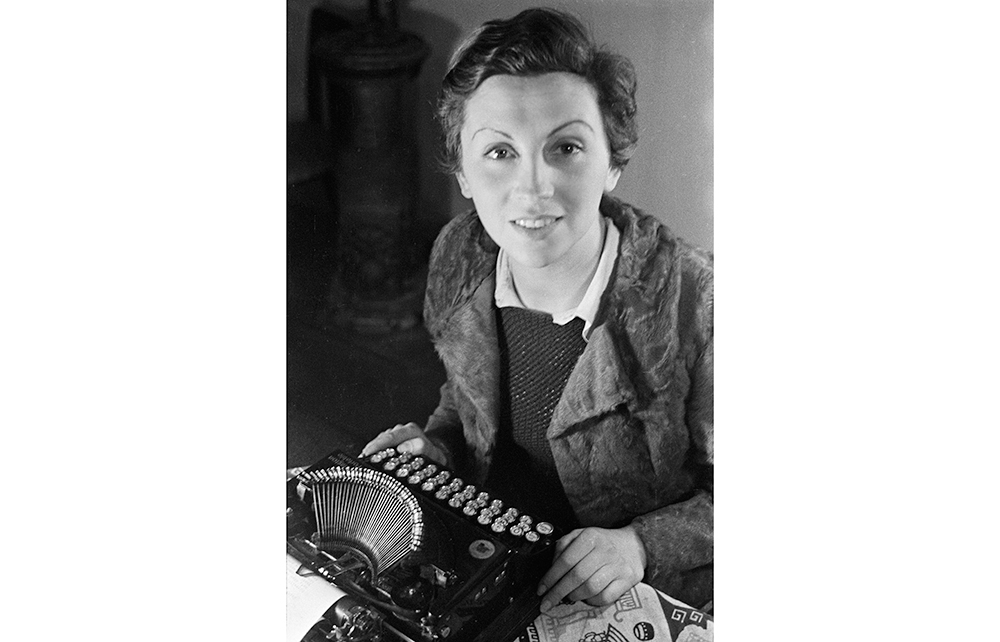‘We English,’ the prime minister Stanley Baldwin allegedly remarked following the outbreak of the Spanish Civil War in July 1936, ‘hate fascism, but we loathe bolshevism as much. So if there is somewhere where fascists and bolsheviks can kill each other off, so much the better.’
Initially, many in Britain probably agreed with Baldwin, seeing no reason to be drawn into another country’s civil war. But a sizeable minority thought very differently, believing that the conflict was not just a civil war but part of an ongoing struggle between democracy and fascism. To them, Spain became a rallying cry, and over the course of the war many thousands from around the world volunteered to join it. Most fought in the communist-controlled International Brigades, but others went to report on the conflict as part of ‘fact-finding missions’, or simply to show their support for the Spanish government’s cause.
The experiences of a number of these visitors, witnesses and reporters are described in Tomorrow Perhaps the Future (the title taken from W.H. Auden’s poem ‘Spain’), by Sarah Watling, the author of Noble Savages, the prize-winning biography of the bohemian Olivier sisters. Its characters are not the familiar ones of Auden, Ernest Hemingway, John Dos Passos and George Orwell. Instead, Watling’s study marks her determination to write women into the history books.
This is not to say, of course, that women have been invisible in the literature of the Spanish Civil War, particularly not this celebrity cohort, which includes the heiress to the Cunard shipping empire, the daughter of a baron, and a number of prominent writers. Nevertheless, as Virginia Woolf (one of the book’s subjects) remarked, war is generally a male affair, and women’s roles often get downplayed or glossed over. Watling points out that the German photojournalist Gerda Taro and the American war correspondent Martha Gellhorn were for many years overshadowed by Robert Capa and Hemingway, their more famous partners; and I suspect that few are aware that the first British volunteer to be killed in Spain was Felicia Browne, a sculptor from Slade School of Art.
Like almost all of those who went to Spain in the 1930s, the women portrayed in this book ‘had a choice not to involve themselves, and decided otherwise’. While Woolf’s inclination was to ‘fight intellectually’ (she tried unsuccessfully to dissuade her nephew Julian Bell from volunteering), others became more emotionally and practically immersed in the Spanish Republic’s struggle. They included Gellhorn, every bit as determined a supporter of the cause as Hemingway. Just as strong-minded was the eccentric Nancy Cunard, who, like Gellhorn, personally witnessed the war’s appalling realities. She frantically tried to spur others into feeling the same outrage, sending out an infamous questionnaire to 200 writers, demanding that they take sides. The overwhelming majority did, even if Orwell, scarred by his experiences of fighting in Spain and irritated by what he saw as Cunard’s simplistic, presumptuous questions, responded: ‘Will you please stop sending me this bloody rubbish.’
Given Orwell’s outrage over the partisan nature of the foreign media’s coverage of the war, it’s not surprising that many believed strongly that no one could really understand what was happening in Spain if they hadn’t been there. Watling quotes Josephine Herbst, an American novelist turned campaigning left-wing journalist, who explained: ‘I didn’t even want to go to Spain. I had to. Because.’ The radical lesbian and devout communist Sylvia Townsend Warner felt the same way, attending a congress of writers in Republican Spain alongside her partner Valentine Ackland. The couple discovered in revolutionary Barcelona the liberty to live their lives together in a way denied them at home.
Yet if going to Spain allowed some women freedoms and opportunities formerly forbidden them, it also presented familiar problems. There was not only a constant risk of unwelcome sexual attention, but also the fact that ‘closed doors could be found in the most open male minds’. The British communist Nan Green followed her husband George to the war, having reluctantly taken the heart-rending decision to leave their two children behind. Her sacrifice was rewarded by a vicious campaign against her by one of the most senior British communists in Spain, who falsely accused her of Trotskyism. Similarly depressing is the account of Salaria Kea, ‘the only female African-American nurse to volunteer in Spain’. The prejudice she suffered before, during and after her time there was shocking – though, as Watling dryly notes, ‘probably not very shocking to a black woman living in 1930s America’.
These are interesting and colourful characters, and Watling seems to have chosen them because they were all outsiders – individuals who ‘resisted in some way the lives they had been offered’ (though this could be said about most who volunteered.) She readily admits to ‘a weakness for people with an instinct for rebellion’; but while her portrayals are sympathetic, they are not uncritical.
She has researched her subjects carefully, and this is a serious, scholarly work, which also brings her group of writers, poets and activists vividly to life. As she explains: ‘I wanted to know what it had meant to take a side, and how it had been done, and I wanted to know what writing had to do with it.’ Many – and not just writers – will feel that these are questions well worth asking.






Comments